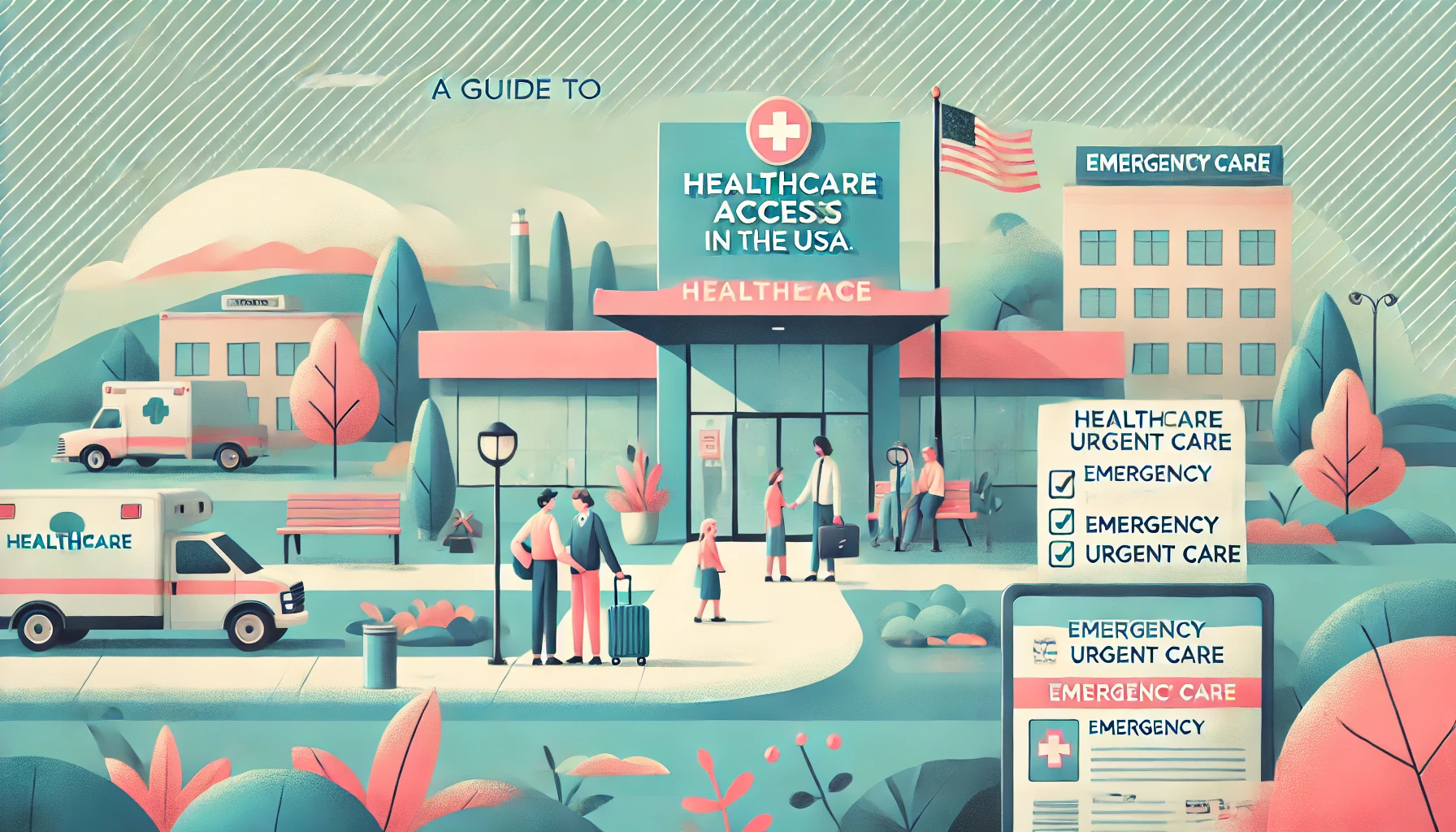A Guide to Healthcare Access for Visitors in the USA
Introduction
Navigating healthcare in the United States can be challenging, especially for visitors unfamiliar with the system. Whether you’re traveling for business, leisure, or family visits, knowing how to access healthcare services is crucial for ensuring your safety and well-being. This guide provides essential information on healthcare access for visitors in the USA.
A Guide to Healthcare Access for Visitors in the USA
1. Understanding the Healthcare System
Types of Healthcare Providers
- Emergency Rooms (ERs): Available in hospitals for urgent medical needs.
- Urgent Care Clinics: Suitable for non-life-threatening issues when you need immediate care.
- Primary Care Providers: For routine check-ups and non-emergency medical needs.
- Specialists: For specific health concerns, such as dermatology or cardiology.
Insurance Coverage
- Travel Insurance: Consider purchasing travel insurance that includes health coverage. This can help reduce out-of-pocket costs for medical services.
- International Health Insurance: If you have international health insurance, check if it provides coverage in the U.S. and how to access services.
2. Preparing for Healthcare Access
Research Local Healthcare Options
- Find Healthcare Facilities: Before traveling, research hospitals, clinics, and urgent care centers in the area you’ll be visiting. Many cities have directories that list healthcare providers.
Carry Essential Documents
- Insurance Information: Have your travel insurance details and any other relevant health insurance documents readily available.
- Medical History: Carry a brief summary of your medical history, including any chronic conditions, medications, and allergies.
Contact Information
- Local Emergency Numbers: In the U.S., dial 911 for emergencies. Familiarize yourself with local emergency services and healthcare contacts.
3. Accessing Healthcare Services
When to Seek Care
- Emergency Situations: Call 911 or go to the nearest emergency room for serious health issues, such as chest pain, severe bleeding, or difficulty breathing.
- Non-Emergency Care: For less urgent issues, consider visiting an urgent care clinic or scheduling an appointment with a primary care provider.
Payment Methods
- Insurance: If you have health insurance, confirm with your provider whether the facility accepts it and what your co-pays are.
- Out-of-Pocket Payments: Be prepared to pay for services upfront if you do not have insurance. Costs can vary widely based on the provider and location.
4. What to Expect During Your Visit
Registration and Insurance Verification
- Upon arrival at a healthcare facility, you’ll be required to register and provide your insurance information. If you don’t have insurance, be honest about your payment situation.
Consultation Process
- Medical Examination: A healthcare provider will assess your condition, ask about your medical history, and perform necessary examinations.
- Treatment Options: The provider will discuss treatment options, medications, and follow-up care. Be sure to ask questions if anything is unclear.
Prescription Medications
- If prescribed medication, you can fill it at a local pharmacy. Make sure to understand the instructions for taking the medication.
5. Post-Care Follow-Up
Understanding Follow-Up Care
- Depending on your condition, the healthcare provider may recommend follow-up appointments or additional tests. Ensure you understand the next steps and how to schedule follow-ups.
Obtain Medical Records
- If you received treatment, request copies of your medical records for future reference. This may be important if you need to seek care again or if your insurance requires it.
6. Emergency Contacts
Know Who to Contact
- Your Embassy or Consulate: In case of a medical emergency, your country’s embassy or consulate can assist you, especially if you require translation services or help with local healthcare systems.
- Travel Insurance Provider: Reach out to your travel insurance provider for guidance on accessing healthcare services and handling claims.
Conclusion
Being prepared for healthcare access while visiting the USA can help alleviate stress and ensure you receive the necessary medical attention. Familiarize yourself with local healthcare options, understand how to navigate the system, and ensure you have the appropriate documentation and insurance coverage. By taking these steps, you can enjoy your visit with peace of mind, knowing that healthcare access is within reach if needed.





